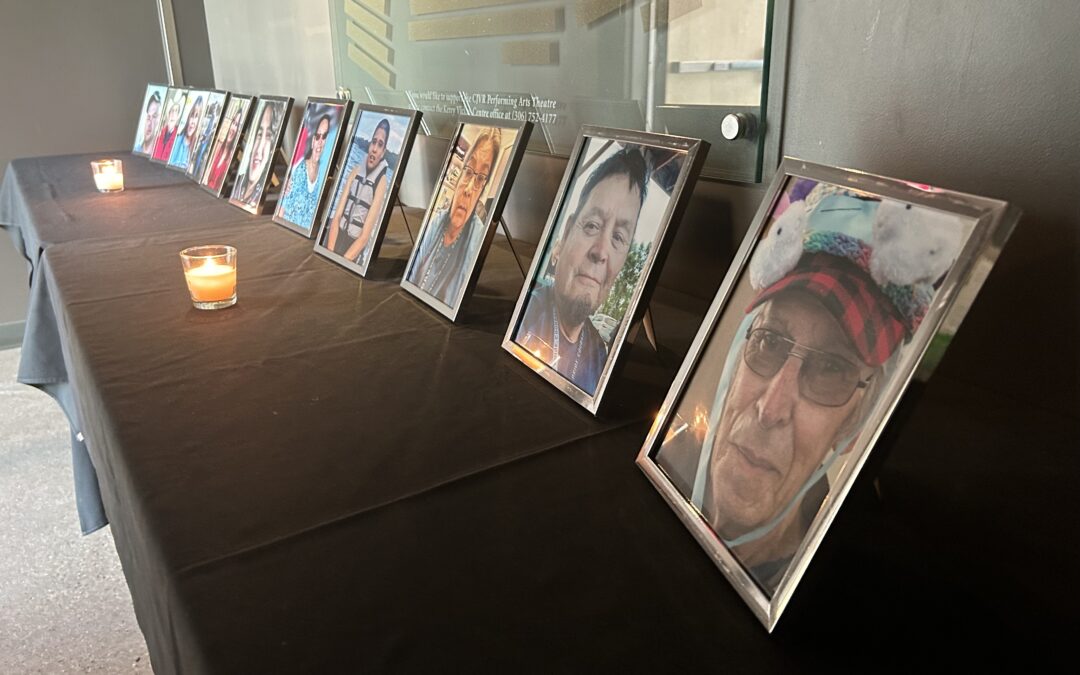WARNING: Distressing content
Day 10 of the inquest looking at the mass stabbing on James Smith Cree Nation and the Village of Weldon got underway Friday morning in Melfort.
Dr. Shaun Ladham, the province’s chief forensic pathologist was the first witness to take the stand and provided testimony about the five autopsies he performed on victims of the mass stabbing.
One of the autopsies Ladham performed was on Earl Burns Sr. Burns Sr’s death has been a major topic of discussion at the inquest, as when police first responded to James Smith officers noted his school bus in the ditch but did not stop to check.
In his testimony Dr. Ladham explained Burns Sr had 14 stab wounds to various parts of his body. According to Ladham all of these wounds played a role in causing his death. Ladham said he noted there was a lot of blood loss.
“The clothes was soaked with blood,” he said.
When it came to providing life saving medical care, Ladham said it would have been difficult to save Burns Sr given the nature of his injuries, specifically the sheer number he had. He added intensive medical care would have to be provided quite quickly. The inquest was told it would have likely taken paramedics 25 minutes to arrive at James Smith, which Ladham testified was not sufficient time.
“It has to be much less than 25 minute response time,” he said.
Dr. Ladham was also questioned about the order in which autopsies are performed by the Coroner’s office. Questions had been raised about why the autopsy of Damien Sanderson was done first. Ladham told the inquest the office generally performs autopsies on bodies as they come in. In the case of Damien, Ladham said the decision to do his autopsy first was a result of the fact that at the time he was still considered to be a suspect which led to the decision being made to push him to the front.
“We decided that should be the first case done,” he said.
Overall Ladham said when scheduling the autopsies of the victims they prioritized them to ensure pathologists could do two in one day so that they could release the bodies to families as soon as possible.
Inquest hears about time at Willow Cree Healing Lodge
The second and final witness of the day to testify was Diane Raine, Myles Sanderson’s institutional parole officer while he was at the Willow Cree Healing Lodge in 2021.
During her testimony Raine spoke about the programming available at the healing lodge. When asked about her direct interactions with Sanderson, Raine said there was nothing about him which made him stand out.
“He was your average offender coming in,” she said.
In her one on one interactions with him Raine said Sanderson was good about communicating his feelings with her specifically when he was feeling frustrated. During his time at Willow Cree Sanderson told Raine he wanted to go back to Saskatchewan Penitentiary because their were a number of things he didn’t like about the healing lodge. This included the food and the fact the facility was located on a First Nation.
“He was feeling very triggered,” said Raine.
When asked by Coroner’s Council about what she would like to see done to change the current system, Raine said she would like to see more Indigenous geared programming for offenders. She added she would also like to see some Indigenous programming made mandatory.
The inquest is set to resume hearing testimony Monday at the Kerry Vickar Centre in Melfort.
Talking Stick is a Saskatchewan-based free anonymous chat platform that connects people seeking emotional support to a trained Indigenous peer advocate 24/7. https://my.talkingstick.app/
